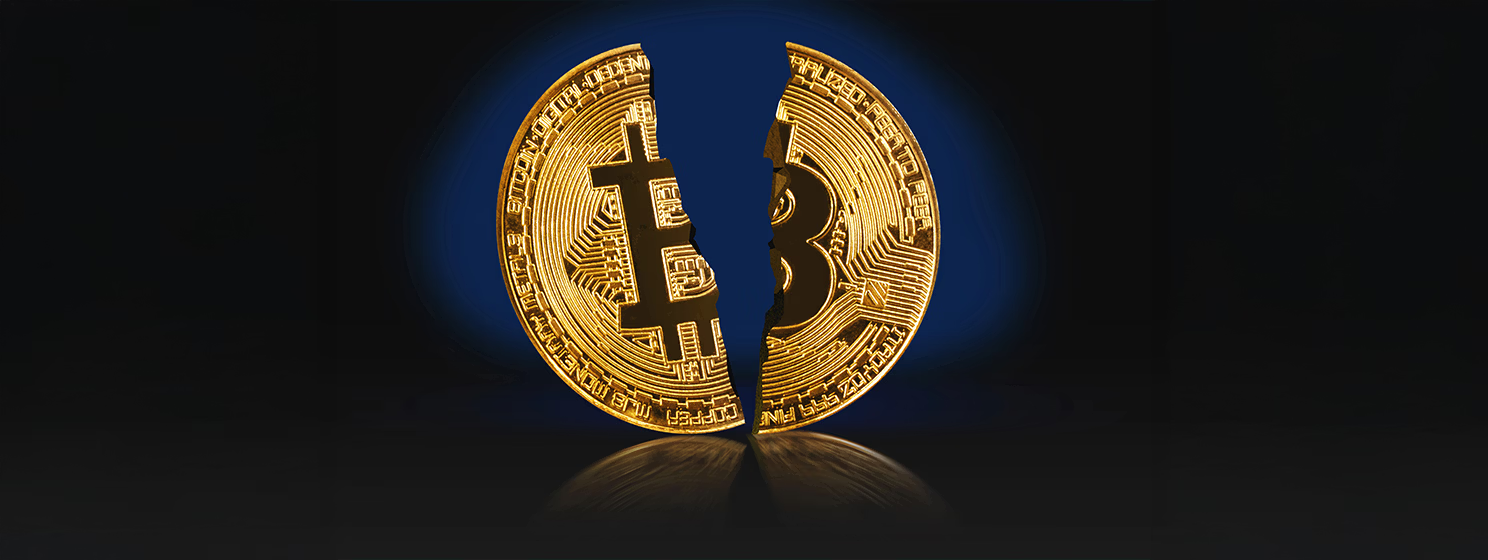|
Getting your Trinity Audio player ready...
|
Tether claims to be raking in billions in profits while the market-leading stablecoin issuers’ controversial loans continue to grow.
- Q2 profits jump
- Post-GENIUS U.S. plans
- Stable chain raises $28 million
- USDT-friendly Plasma readies for launch
- Twenty One Capital given more of Tether’s BTC
Tether’s latest quarterly attestation of the reserves backing the $157.1 billion (since grown to $163.8 billion) in circulating USDT as of June 30 shows total assets of $162.6 billion, resulting in $5.5 billion in what Tether calls ‘equity.’ That’s $100 million below the $5.6 billion Tether claimed in the company’s Q1 attestation and a $1.6 billion reduction from its Q4–24 figure.
Tether also claims to have generated $4.9 billion in net profits during Q2, up sharply from Q1’s $1 billion.
As always, Tether’s numbers don’t represent an independent audit, merely a ‘reasonable assurance engagement.’ That’s a one-day snapshot of figures supplied by Tether to BDO Italia, which makes no guarantee as to what those numbers looked like at any point before or after June 30. For nearly a decade, Tether has promised that a proper third-party audit is imminent but has yet to deliver on those promises.
The bulk of Tether’s Q2 reserves consists of U.S. Treasury bills, of which Tether claims to have $105.5 billion, up from $98.5 billion in Q1. Tether further claims that its “total exposure” to U.S. T-bills—counting indirect ownership via overnight reverse repo agreements and money market funds—is over $127 billion. This places Tether “among the largest holders of U.S. government debt globally,” surpassing South Korea and threatening to overtake Saudi Arabia.
Tether’s haul of ‘precious metals’ grew by nearly $2 billion to $8.7 billion, its stack of BTC grew by $1.2 billion to $8.9 billion, while ‘other investments’ grew by $300 million to $4.8 billion.
Tether’s cash position now stands at a mere $32.4 million, the second-smallest individual segment of its reserves (after $14.6 million in corporate bonds) and the lowest its cash-on-hand has been for years.
Tether’s controversial ‘secured loans’ increased by more than $1.7 billion to over $10.1 billion, despite the company having pledged in December 2022 to eliminate these loans from its balance sheet. In April, Tether was declared the top digital asset lender, vastly eclipsing runners-up Galaxy Digital and Ledn.
Tether insists its loans are “over-collateralized by liquid assets and subject to liquidation mechanisms,” like the kind that got it in legal trouble with creditors of the defunct Celsius Network. BDO Italia said it inspected “a sample” of these loans to “verify the existence of the collateral through the analysis of the contract and of the transactions.”
Tether has argued that since its reserves exceed its liabilities, the loans don’t matter. But the loans are now nearly twice the value of its ‘equity’ and continuing to grow. And the share of Tether’s reserves outside the ‘cash & equivalents’ category has risen from ~14% two years ago to over 20% today.
GENIUS and the domestic stablecoin
In celebrating the Q2 results, Tether CEO Paolo Ardoino tweeted that Q3 would see the company “focus on a new venture in the U.S., to build a best-in-class product suite (stablecoins plus more), designed for the specific, already highly efficient, market.”
Ardoino previously hinted about Tether issuing a new U.S.-focused stablecoin before the year is through. The idea was that this U.S.-only stable would serve as a “settlement currency” for U.S. institutions, leaving USDT to serve as a dollar substitute in emerging markets.
In a recent interview, Ardoino claimed Tether “wanted to open up shop in the U.S. for one of our business lines” but didn’t offer specifics, simply repeating that the goal was to launch a “domestic” stablecoin “very very soon.”
Ardoino claimed Tether had “an enormous amount of financial institutions knocking on our door, saying ‘can we partner, can we do something together?’” Ardoino believes Tether’s unique selling point is its ability to offer these institutions “enormous access, unprecedented access outside the U.S.”
Tether’s need for a U.S.-focused stablecoin is due to President Trump having signed the GENIUS Act into law last month. GENIUS imposes certain Tether-unfriendly rules on stablecoin issuers, including having fiat reserves comprised solely of T-bills, cash, and equivalents (so no gold, BTC, or questionable IOUs).
While GENIUS grants foreign issuers a lengthy window in which to come into compliance, its loopholes are significant. For instance, foreign issuers could receive a pass if the regulatory and supervisory regimes in their home markets are deemed “comparable” to those in the U.S., with significant discretion granted to the U.S. Treasury Secretary as to how to define ‘comparable.’
Perhaps even more important, Tether’s T-bills are allegedly custodied by Wall Street firm Cantor Fitzgerald (NASDAQ: ZCFITX), whose founder, Howard Lutnick, is now Trump’s Commerce Secretary. Ardoino was even invited to the White House to observe Trump signing GENIUS. Obviously, Tether has friends in high places, which may alleviate the need for Tether to do much of anything, compliance-wise.Tether’s new rails raising millions
In the same interview, Ardoino was asked about Tether’s involvement in some new stablecoin-specific networks. Ardoino talked up the need to improve the stablecoin user experience, including allowing users to pay transaction fees (‘gas’) with the same token involved in the transaction. Ardoino believes this would give stablecoin-native networks “a huge advantage.”
Stable, the layer-1 ‘stablechain’ network “optimized for payments using USDT,” announced on July 31 that it had raised $28 million in seed round funding. The round was led by Web3 venture capital firm Hack VC and Bitfinex, the digital asset exchange that exists under the same corporate umbrella as Tether. Bitfinex is cited as “one of the early investors” in Stable that “played a key role in incubating Stable from the start,” (Just say ‘founders,’ guys).
Additional participation came from Franklin Templeton, Castle Island Ventures, eGirl Capital, Bybit-Mirana, Susquehanna Crypto, Nascent, Blue Pool Capital, BTSE, and KuCoin Ventures. Notable angel investors/advisors include Binance chairman Gabriel Abed, Anchorage Digital CEO Nathan McCauley, Braintree founder Bryan Johnson, and Ardoino, who in addition to leading Tether also serves as Bitfinex CTO.
Stable CEO Joshua Harding said traditional payment rails “have failed to achieve fast, reliable, and secure digital payments despite massive demand from consumers … Stable was developed to take advantage of the potential behind stablecoins like USDT to offer instant and seamless payments.”
While other stablecoins can be deployed on Stable, Harding told The Block that the network’s architecture is integrated around USDT, which “will remain the foundation of the chain’s design and go-to-market.”
Ardoino is quoted in the funding announcement saying “major financial institutions and banks will be able to fully unleash the power behind assets like USDT, something the Stable team fundamentally understands and is exceptionally poised to capitalize on.” Stable’s mainnet is aiming to launch in late-Q3 or early Q4, which aligns with Ardoino’s ‘domestic’ U.S. timeline.
It’s worth mentioning that Stable relies on USDT0 aka ‘Tether Zero,’ an omnichain version of USDT. USDT0 is managed by the mysterious Everdawn Labs and its equally mysterious co-founder ‘Lorenzo R’ (Everdawn’s other co-founder has never been named.) Everdawn is based in the British Virgin Islands, which until this year was also Tether’s home base. Some suspect Everdawn is a Tether ‘front’ but these cynical suspicions have yet to be proven. Yet.
Plasmatic USDT
Stable isn’t the only Bitfinex-supported, Tether-aligned stablecoin network out there. Plasma—not to be confused with the failed Ethereum scaling solution of the same name—plans to offer zero-fee USDT transfers when it launches at some unspecified future date. (Plasma’s testnet launched on July 15.)
While technically a standalone network, Plasma is an Ethereum Virtual Machine-compatible BTC sidechain, periodically finalizing its blocks on the BTC ledger. Plasma relies on a pipelined implementation of Fast-HotStuff as its consensus layer, while execution is handled by a Reth-based client.
Plasma plans to launch with support for USDT and a bridged version of BTC. Plasma may allow non-Tether stablecoins to ride its rails at some point, “based on usage, liquidity, and volatility,” and Plasma will also support USDT0.
Plasma got its start in 2024 with a $3.5 million boost from Bitfinex, but raised another $24 million this February in a round led by Bitfinex and Framework Ventures, with participation from DRW/Cumberland, Bybit, Nomura, and others. In May, a strategic investment in Plasma was made by Founders Fund, whose founder, Peter Thiel, was an early Plasma angel investor.
In July, Plasma held an initial coin offering (ICO) for its native token XPL. Looking to raise $50 million, Plasma received $323 million in overcommitments that it later refunded. XPL will be used both for transactions and gas fees, as well as to reward Plasma transaction validators. But Plasma users won’t have to hold XPL to transact USDT on the network.
Twenty One Capital’s BTC stack grows to 43,514 tokens
Last month, Tether published the first overview of its investment/venture portfolio (incomplete, according to Ardoino). The portfolio ranges from block reward mining outfit Bitdeer (NASDAQ: BTDR) to a South American agribusiness to its growing stake in Italian football club Juventus.
Tether is also majority owner of Twenty One Capital Inc, a BTC ‘treasury’ firm that launched in April with a $2 billion-plus contribution from Tether and nearly $600 million from Bitfinex. (Another $891 million came from SoftBank Group (NASDAQ: SFTBF), but the fine print says this sum came courtesy of ‘Tether on Behalf of Softbank.’ (Secured loans, anyone?)
Last week, Twenty One announced that Tether would provide it with an additional 5,800 BTC tokens, bringing the total amount under Twenty One’s control to 43,514, the third-largest on the corporate treasury list.
Twenty One plans to conduct a reverse-merger with Cantor Equity Partners, a NASDAQ-listed special purpose acquisition company (SPAC) controlled by Cantor Fitzgerald. The goal is to capitalize on the current mania for public companies that don’t do much beyond hold BTC (or other tokens). Twenty One will list under the ticker symbol XXI.
A Twenty One spokesperson recently suggested to Bloomberg that the company was weighing whether to further monetize its BTC stack by making dollar-based loans against BTC as collateral. According to the unidentified spokesperson: “Optionality is wealth, for us everything is one the table because we think we can do anything.”
Watch: Bringing the Metanet to life with Teranode

 12-27-2025
12-27-2025 




